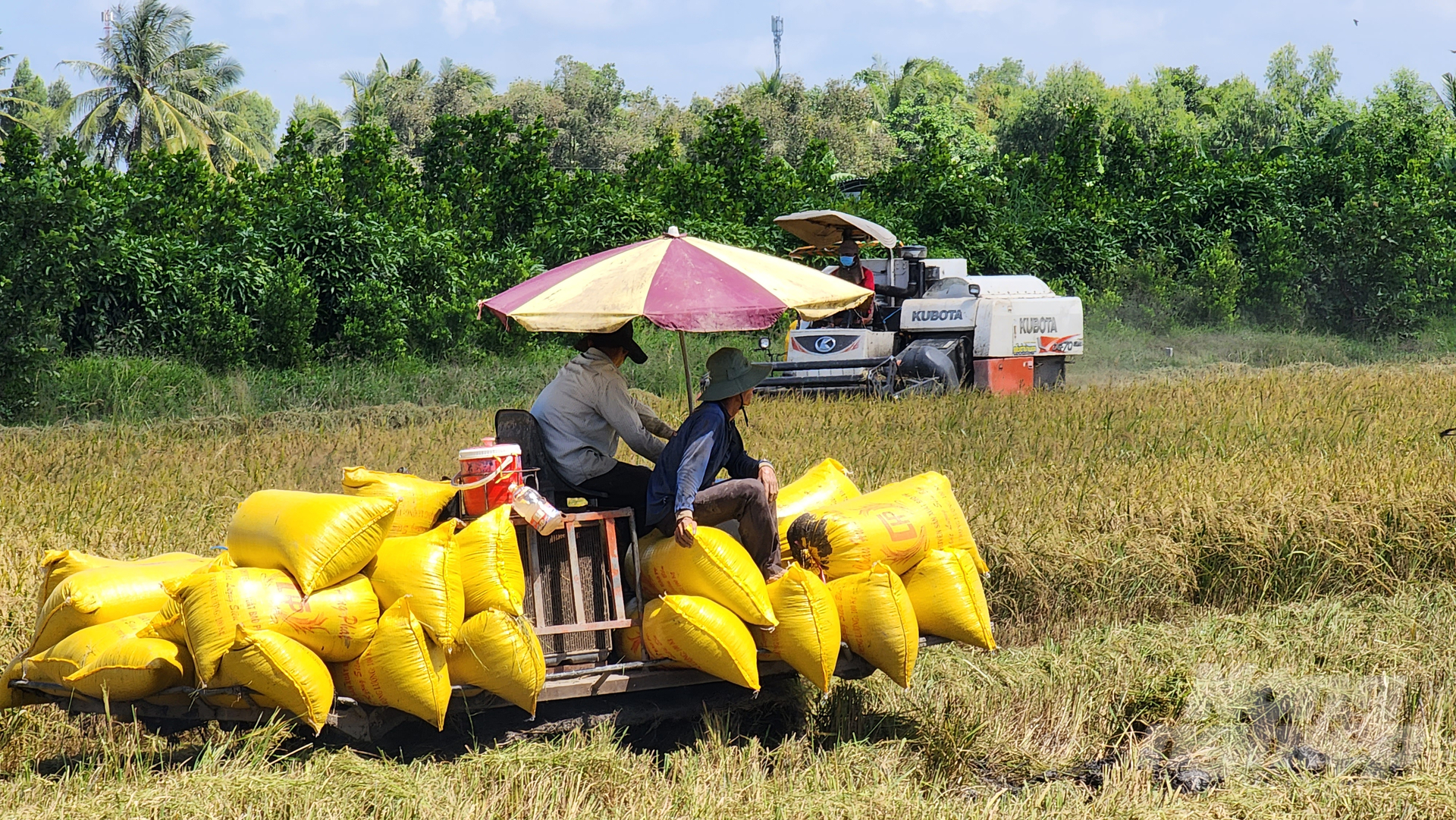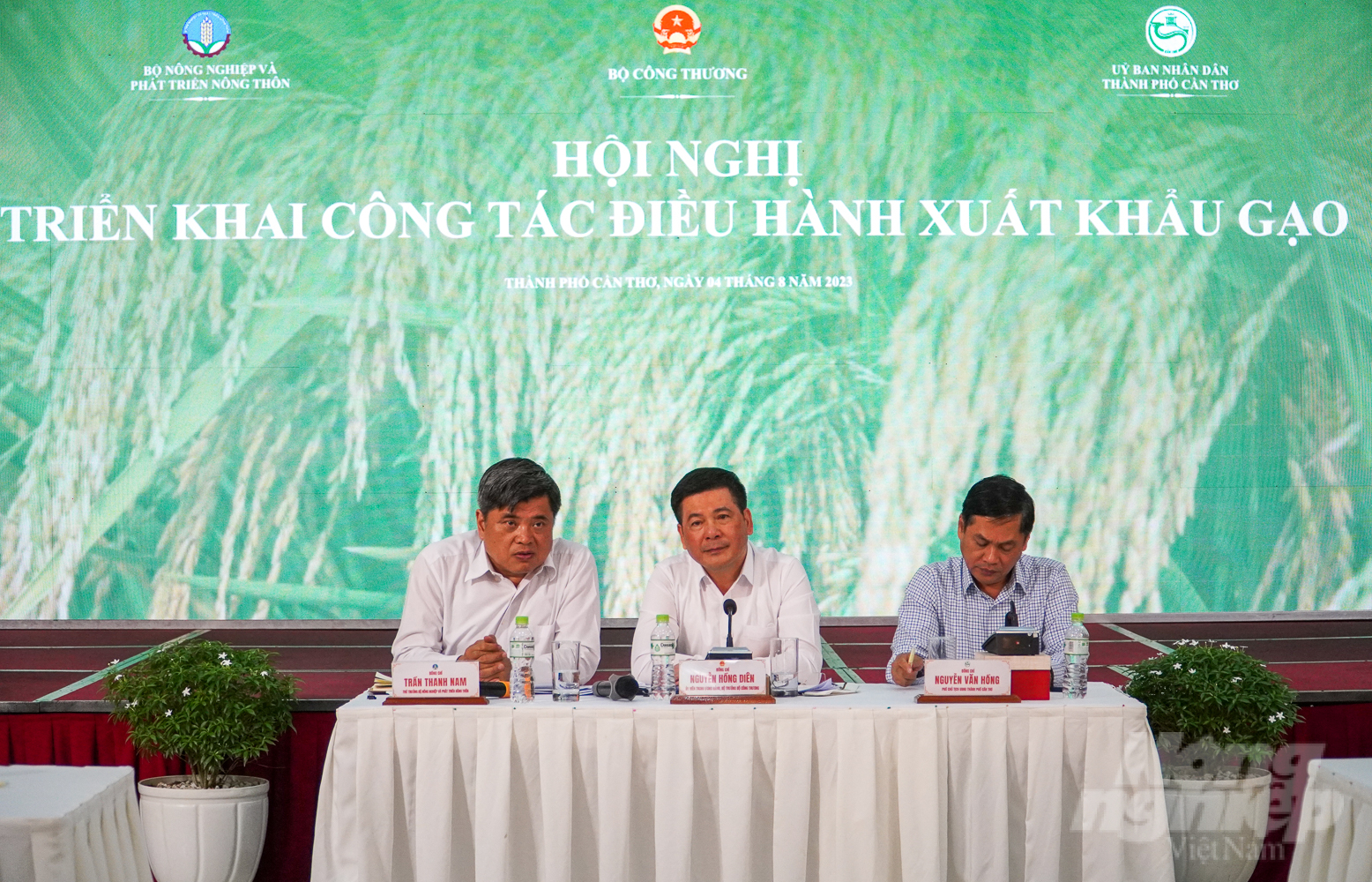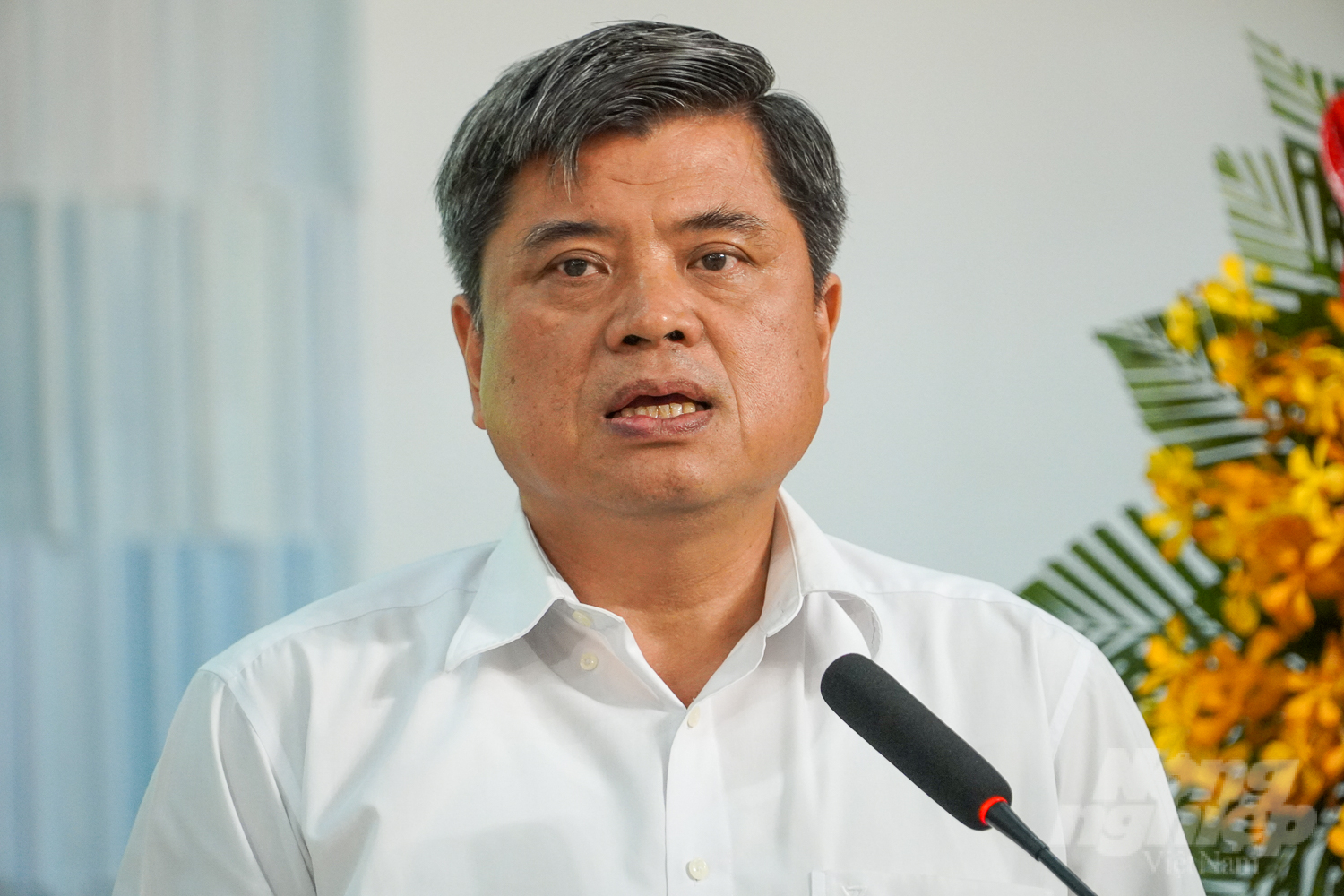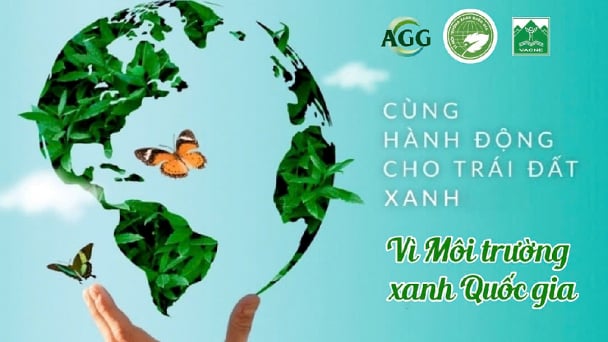May 18, 2025 | 12:03 GMT +7
May 18, 2025 | 12:03 GMT +7
Hotline: 0913.378.918
May 18, 2025 | 12:03 GMT +7
Hotline: 0913.378.918
The Ministry of Industry and Trade, the Ministry of Agriculture and Rural Development, and the Can Tho City People's Committee coordinated to organize a conference on the morning of August 4 on rice export management. Accordingly, participants discussed market opportunities and long-term solutions to promote rice production and export.
According to inter-ministerial forecasts, Vietnam is projected to export 4.83 million tons of rice, which is valued at 2.58 billion USD, by the end of July 2023. This is a growth of 18.7% in volume and 29.6% in value over the same period in 2022.

According to reports made by the Ministry of Agriculture and Rural Development, Vietnam is expected to grow 7.1 million hectares of rice with an estimated output of over 43.1 million tons in 2023. This level of output can provide at least 20 million tons of rice, which can meet the demand for food security and export. Photo: Kim Anh.
Vietnam’s structure of exported rice is currently suitable for global market trends, with fragrant rice, sticky rice, high-grade white rice, etc. adding value to Vietnamese rice products. In addition to traditional markets, rice exports to countries including the Philippines, China, Indonesia, Malaysia, Ivory Coast, and Hong Kong remained stable. Additionally, several market sectors experienced exceptional development, such as the EU.
According to the Ministry of Industry and Trade, India's recent ban on rice exports has caused the price of Vietnamese rice exports to reach 590 USD per ton for 5% broken rice. This price range is comparable to that of Thailand, at 625 USD per ton.
The Vietnam Food Association reported that the domestic price of rice plants rose by 368 to 441 VND per kilogram as of July 27, 2023. On the other hand, the overall domestic price of rice products saw an increase of 850 to 940 VND per kilogram.

Can Tho City organized a conference on rice export management on August 4. Photo: Kim Anh.
Vietnam’s domestic price of rice increased rapidly immediately following the news of India's ban on rice exports. The Ministry of Industry and Trade estimates that the average price of rice increased by 50 to 100 VND per kilogram per day. Moreover, the price of raw material rice recorded an increase of 400 to 500 VND per kilogram.
Domestic prices of rice rose by roughly 5 to 6% on July 27, a week after India banned rice exports. Namely, the IR50404 rice variety was priced at 10,750 VND per kilogram, which is an increase of 500 VND per kilogram; the OM5451 rice variety was priced at 11,000 VND per kilogram, which is an increase of 550 VND per kilogram; the Dai Thom 8 rice variety was priced at 11,300 VND per kilogram, which is an increase of 650 VND per kilogram.
According to Mrs. Vo Phuong Thuy, Deputy Director of Dong Thap province’s Department of Industry and Trade, the Ministry of Industry and Trade and other relevant agencies must provide a solution to stabilize the price and offer support to rice farmers, in response to the rising prices in the domestic market.
The Chairman of the Vietnam Food Association, Mr. Nguyen Ngoc Nam, emphasized the stark difference between the domestic and export prices of rice. Consequently, Mr. Nam proposed that Vietnamese businesses to securing purchase orders before entering into contracts with farmers, in order to prevent the rice prices from rising and aligning the interests of stakeholders in the rice value chain.
According to Mr. Do Ha Nam, Chairman of the BOD of INTIMEX Group JSC, the domestic prices of rice will continue to rise as inventory levels fall. As a result, businesses must preemptively plan for a sizeable investment in order to promptly purchase rice.
Based on an assessment of the domestic production and balancing, the Ministry of Industry and Trade cited data from the Ministry of Agriculture and Rural Development to forecast that Vietnam will grow 7.1 million hectares of rice with an estimated output of over 43.1 million tons in 2023. Accordingly, this level of output can provide at least 20 million tons of rice.
Mr. Nguyen Hong Dien, the Minister of Industry and Trade, assessed that Vietnam will be able to export over 7.5 million tons of rice after satisfying the domestic demand for rice, which is an increase of at least 400 thousand tons compared to that of 2022.

Mr. Nguyen Hong Dien, Minister of Industry and Trade, proposed stakeholders to focus on strengthening the cooperation between businesses and farmers in order to prevent price competition, trading disputes, and price coercion. Photo: Kim Anh.
The export price of certain Vietnamese rice varieties has reached a record high level within the last eleven years. With the aim of boosting the efficiency of rice export management and selling commodity rice at competitive prices, Mr. Dien suggested the Ministry of Industry and Trade, the Vietnam Food Association, rice exporters, and relevant agencies focus on strengthening the cooperation between businesses and farmers in order to prevent price competition, trading disputes, and price coercion. On the other hand, rice businesses must be updated regularly on the status of rice supply and demand, the rice market, and relevant support policies.
Vietnam’s total rice export volume reached approximately 4.83 to 4.84 million tons within the first seven months of 2023. Consequently, nearly 2.66 to 2.67 million tons of rice will be employed to fulfill export needs during the last five months of 2023. Additionally, this figure excludes the yearly rice imports from Cambodia for processing.
Mr. Tran Thanh Nam affirmed that Vietnam will maintain food security throughout the remainder of the year. The Ministry of Agriculture and Rural Development projected that Vietnam will have approximately 11.8 million tons of rice by the end of 2023, including 9.2 million tons of rice from the Mekong Delta. In response to the surge in rice prices during the second quarter of 2023, relevant agencies under the Ministry of Agriculture and Rural Development actively sought solutions to adjust cropping patterns in rice production areas, mitigating the impact of climate change and ensuring stable production figures.
Missions from the Ministry of Agriculture and Rural Development recently visited different regions in Vietnam to conduct thorough evaluations of production practices. In addition, the Ministry reinforced the cooperation mechanism between businesses and agricultural cooperatives in the establishment of raw material areas. Furthermore, the Ministry plans to expand the rice production area by an additional 50,000 hectares for the 2023 winter-spring crop.

Deputy Minister Tran Thanh Nam urges businesses to cooperate with the Ministry of Agriculture and Rural Development in establishing seasonal agreements within rice production areas. Photo: Kim Anh.
According to the aforementioned evaluations, the Mekong Delta region currently employs three distinct methods of consumption linkage. Firstly, the direct sale of rice from farmers to businesses accounts for 12.1% of the overall production output; sale of rice from farmers to intermediary traders and subsequently to processing and export businesses accounts for 50%; the sale of rice from farmers to contracted agricultural cooperatives accounts for 37.9%. Furthermore, only 50 out of the total 180 businesses eligible for rice export in the Mekong Delta have proactively established connections with agricultural cooperatives to create raw material areas.
Subsequently, Deputy Minister Nam urges businesses to cooperate with the Ministry of Agriculture and Rural Development in establishing seasonal agreements within rice production areas.
Translated by Nguyen Hai Long

(VAN) 14 out of 35 domesticated elephants in Dak Lak province have had their living conditions improved, with 11 of them currently participating in the non-riding elephant tourism model.

(VAN) Muong Nhe Nature Reserve hopes that being upgraded to a national park will lay the foundation for forest protection efforts to be carried out in a systematic, modern, and sustainable manner.
/2025/05/16/3923-2-171845_52.jpg)
(VAN) Lower costs, higher yields, and improved soil quality are outstanding benefits that soybeans bring when integrated into the crop rotation system.

(VAN) The 'For a Green National Environment' programme aims to promote a green lifestyle, support businesses in implementing ESG practices, and turn Net Zero commitments into concrete actions.

(VAN) Cold-barn systems efficiently manage environmental and temperature conditions, which aids in the prevention of respiratory diseases in pigs and protects them from the vectors that transmit African swine fevers.

(VAN) To tackle challenges, the project 'Addressing key technical bottlenecks in the grouper supply chain in Vietnam' has been underway since 2024.

(VAN) The project 'Disease-Resilient and Sustainable Cassava Production Systems in the Mekong Region', funded by the Australian Center for International Agricultural Research (ACIAR), is being implemented from 2024 to 2028.